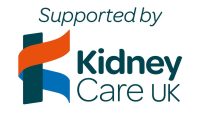
Communication is an essential part of patient involvement
Providing information to patients is not new. If you’ve ever been involved with a survey or research project, you will be familiar with ‘patient information leaflets’. However, these are often inadequate and poorly written, with confusing technical terms and jargon.
The National Standards for Public Involvement describe ‘good’ communications in patient involvement. They emphasise the use of plain language for ‘timely, two way and targeted communications, as part of involvement plans and activities’. Three quality indicators are included in the Standard:
- Develop and deliver a communications plan for involvement activities
- Be inclusive and flexible in your communication methods to meet the needs of different people
- Gather and act on feedback, then share results
Tips for developing a communications plan for any activity
- Why are you communicating? (Your purpose)
- Who are you communicating with? (Your audience?)
- What do you want to communicate? (Your message?)
- How do you want to communicate? (Your communication channels?)
- Who else should you involve? (Colleagues, patients?)
- Who else can help you distribute your communications? (Your stakeholders or internal professionals?)
- What will it cost? (Your budget?)
When you have developed your plan:
- Implement the plan – design your messages and distribute to your intended audience.
- Assess the results – adapt and revise your plan if necessary
- Share what happened
Meeting the needs of different people
Visit our Plain English Resources for guidance on writing for a lay audience and for people with special needs (disabilities, hearing loss etc).
Communications examples selected by KPIN
SHAREHD – a quality improvement collaborative to scale up Shared Haemodialysis Care in centre based patients
- View/download the SHAREHD Patient Information Leaflet (PDF)
- View/download the Example_SUPPG tri fold Leaflet4_Final 160916 (Word)
Join us on Social Media
KPIN is on the most popular social networks.


